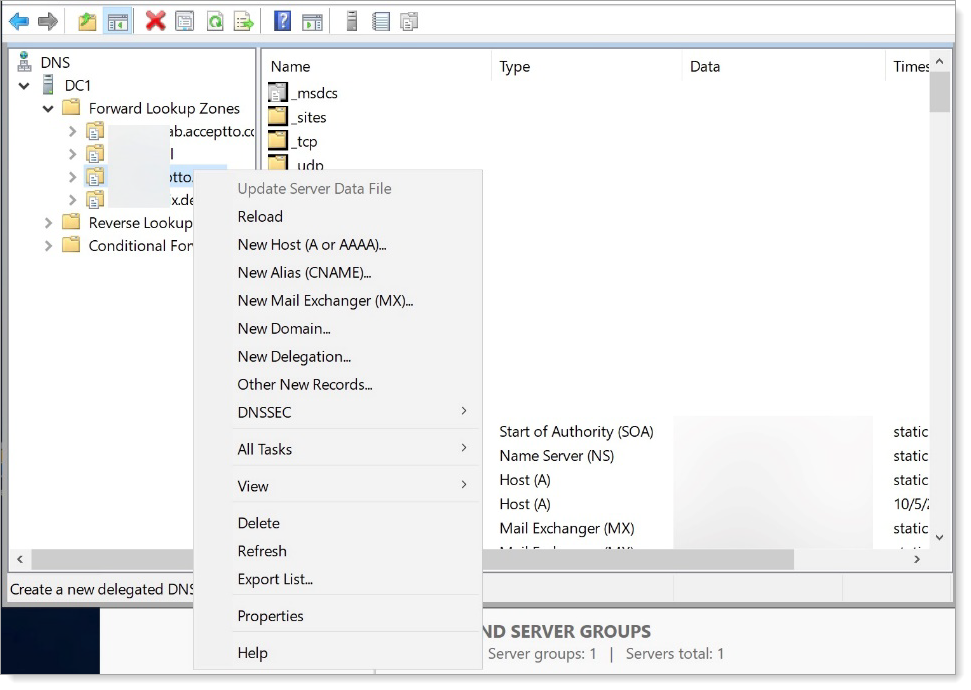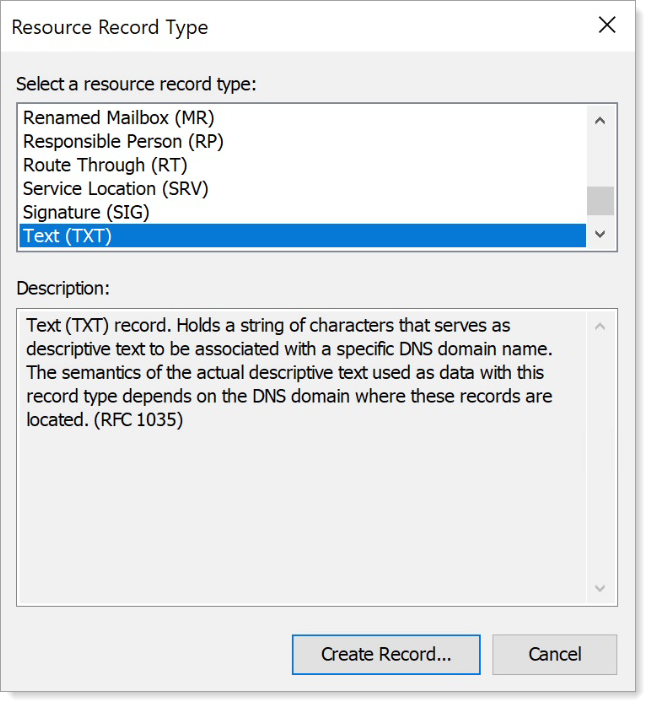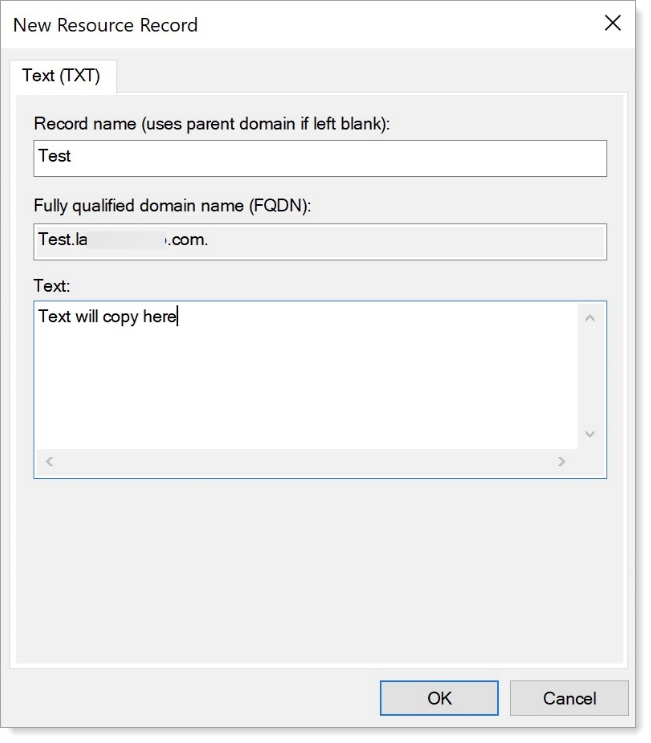How to create a DNS TXT record
A DNS text (TXT) record lets a domain administrator save text information for a domain or hostname in DNS. TXT records are important for domain-related tasks and services because they hold information that humans and computers can understand.
For example, DNS TXT records can verify domain ownership, especially when setting up services like Google Workspace (formerly G Suite) or Microsoft 365.
Follow the instructions below to create a DNS TXT through Active Directory or your DNS hosting provider. A single domain can host many TXT records.
Note
The following instructions are general steps for creating a DNS TXT record. The exact steps and options for creating one can vary depending on your DNS hosting provider.
Consult your provider's documentation or contact their support for specific guidance.
Active Directory
Log in to your DNS Server and go to Start > Administrative Tools.
Select DNS and expand the
Forward Lookup Zonesfolder.Right-click the domain you want to add the TXT record to and select Other New Records....

The Resource Record Type window appears.
Select Text (TXT) and click Create Record....

The New Resource Record window appears. Set the following:
Record name (uses parent domain if left blank)
Provide the hostname or subdomain for which the TXT record should be created.
Text
Enter the information you want associated with the DNS.
For example, if your domain server provides a unique identification token, add that here.

Click OK.
Other DNS platforms
Log in to your domain's DNS dashboard with an administrative account.
Navigate to the section or option where you manage your domain's DNS records.
For example, "DNS Management", "Advanced Settings", or something similar.
Select the domain for which you want to create the TXT record.
Look for an option to add a new DNS record.
For example, "Add Record," "Add DNS Record," or something similar. Choose "TXT" as the type of record you want to create.
Configure the DNS TXT record and save or publish your changes.
Wait until the changes take effect. This can range from a few minutes to up to 72 hours.